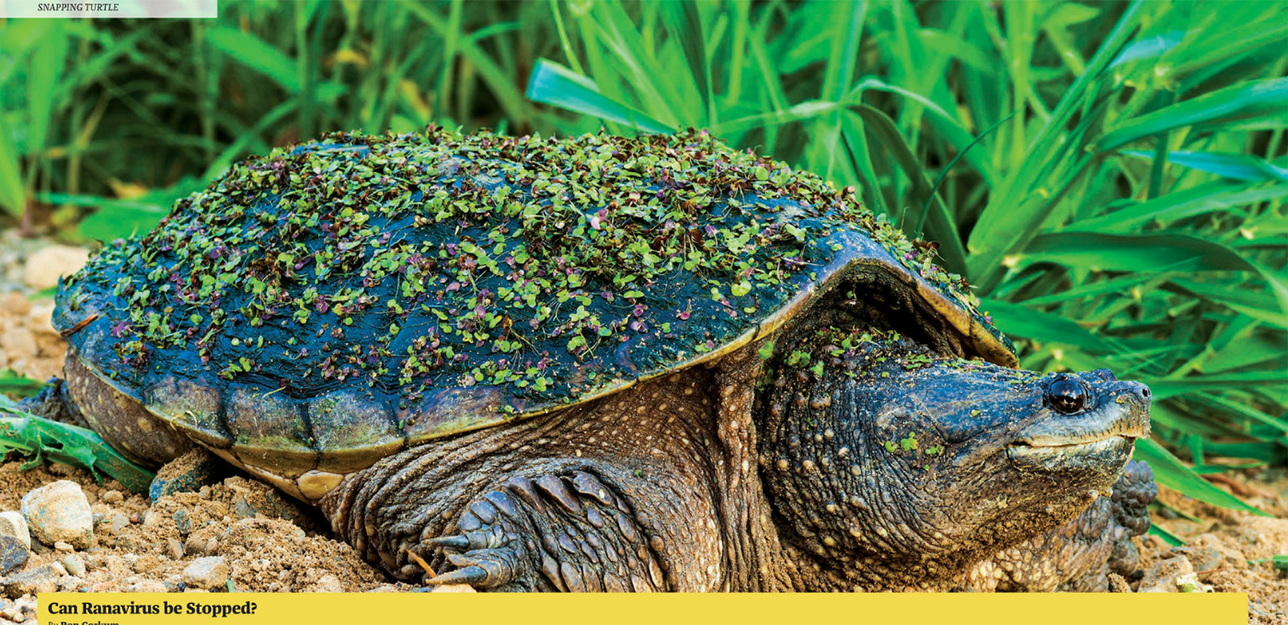Re: “Can Ranavirus be Stopped?” [Spring 2020]
Thanks for a lovely issue.
The article on Ranavirus found in Cheldyra serpentina is interesting, but even if you are working on developing a baseline with current data, like with the Coronavirus, there is very little testing so it is nearly impossible to know the scope of its effect on the C. serpentina population other than to say it is “here” in Ontario. It is also hard to say that the turtle that died in 2017 definitively died of the Ranavirus. It seems to be a contributing factor, but C. serpentina is known to be resistant to the many toxins that build up in nature thanks to our agricultural and industrial practices.
So your article inspires other questions concerning C. serpentina and the Ranavirus. What anthropogenic stressors are making C. serpentina more susceptible to the Ranavirus? What strain of the virus was the turtle infected by? And what strain is primarily wreaking havoc in Ontario? Aside from the anthropogenic stressors, what can lead to immunosuppression and make them more prone to the disease? Because of their durability, are they a problem as vectors, surviving with the disease and infecting other wildlife? And that leads to the ultimate question…. what management practices are best suited to address Ranavirus in Ontario and how do we get government involved enough to care to help manage the die-off of our beloved reptilian species?
I have to respectfully disagree with Sue Carstairs who believes the threat is high. The threat is under-studied and unknown or you wouldn’t be working on a baseline at this point. What we do know is that the threat to habitat via development and agriculture, via human encroachment, is degrading or destroying systems that lead to stress and immunosuppression in many species. This in turn leads to a blossoming of disease and spread of bacterial and virulent infections from the Ranavirus to the evolution of the latest Coronavirus and the disease (COVID-19). It may be unpopular to suggest it, but the connection is clear and our unyielding drive into nature to provide more resources for burgeoning populations globally is driving the local destruction of native species and the overwhelming growth and propagation of invasive species. All this while making humans very sick as well.
For an interesting read:
greatlakeswetlands.ca/wp-content/uploads/2019/01/McKenzie-et-al.-2019.pdf
– Torben Russo, Waterloo

